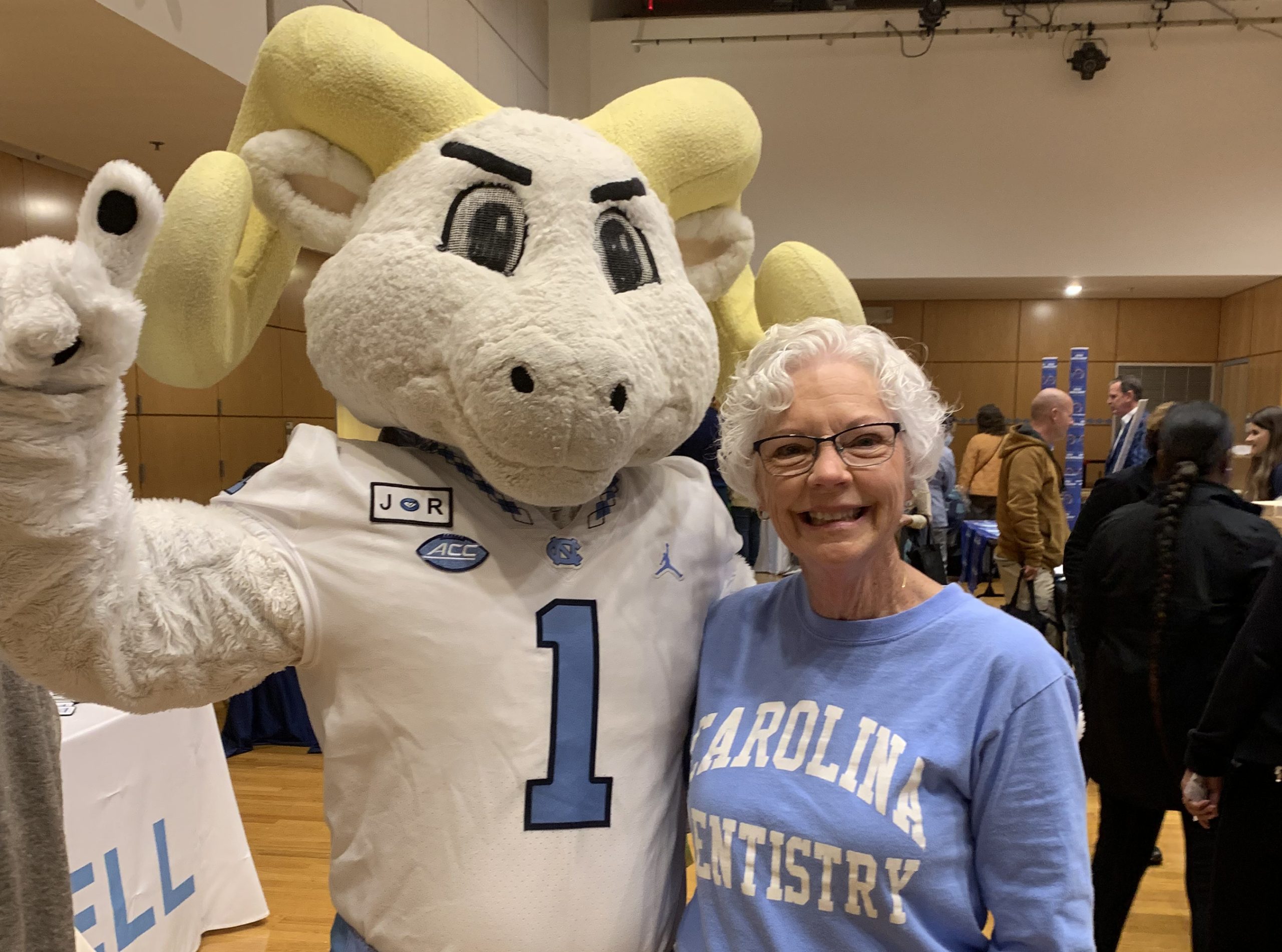Olmsted Honored for Research Achievement
Matthew Olmsted, a fourth-year dental student at UNC-Chapel Hill, received third-place honors in the recent 2007 American Dental Association/DENTSPLY Student Clinician Research Program competition.
Matthew Olmsted, a fourth-year dental student at UNC-Chapel Hill, holds the award he received for placing third in the recent 2007 American Dental Association/DENTSPLY Student Clinician Research Program competition
The judged competition, held during September’s ADA Annual Session in San Francisco, featured student representatives from 52 dental schools nationwide. Each participating student clinician had previously been selected through his or her individual school’s poster presentation competition.
Olmsted’s research project, in the category of clinical research/public health, was titled “Human Bite Force Production in Amelogenesis Imperfecta Patients and Their Family Members.” Amelogenesis imperfecta (AI) is a tooth disorder causing abnormalities in the development of enamel.
During a four-hour period, student clinicians stood with their poster presentations and gave oral presentations on their research to teams of judges. Presentation times were between seven and 10 minutes, and Olmsted estimates that he presented his research four or five times during that period.
“The judges are looking for professionalism, quality of research, creativity and presentation style,” he said. “They ask many in-depth questions, and I remained relaxed the entire time. With so many great students around you presenting excellent research, you realize everyone is already a winner and just enjoy the opportunity to present your research and compete in a national competition.”
Award recipients in the two categories, basic science research and clinical research/public health, were announced the evening of the competition.
In his research, Olmsted studied the relationship between anterior open bite, affecting an estimated third of AI patients, and bite force production. Through his study, Olmsted sought to evaluate bite force before and following treatment of AI teeth. His study featured 16 human subjects – 10 were affected by AI and six were not affected – and measured sub-maximal bite force at the incisors, right and left first premolars and right and left first molars.
His study results indicated bite force to be the most pronounced at the first molars, decreasing anteriorly along the dental arch.
“AI patients did generate lower bite forces than their non-affected counterparts,” Olmsted wrote in his research abstract. “Bite force of AI patients did increase following restorative treatment.”
Dr. J. Timothy Wright, Dr. James W. Bawden distinguished professor of pediatric dentistry and chairman of the Department of Pediatric Dentistry, and Dr. Sylvia Frazier-Bowers, assistant professor of orthodontics, were Olmsted’s research advisers at the UNC-Chapel Hill School of Dentistry.
“Matt used knowledge from his undergraduate studies of bite force to address a serious craniofacial growth problem in a population of patients with abnormal enamel formation whose teeth fail to grow so they can bite together,” said Wright. “His work is helping us understand the relationships between muscle use and facial growth in this population, which could ultimately lead to an intervention preventing this type of devastating malocclusion that typically requires surgical correction.”
Frazier-Bowers also stressed the importance of Olmsted’s undergraduate research experiences, adding that “Matt’s award is a testament to his hard work, discipline and enthusiasm. His project explores a novel research question and forms the basis for future genetic studies that will establish whether the cause of ‘open bite’ malocclusion in this population is genetic or secondary to the weakened enamel state. This important work contributes to a growing field that aims to understand the genetics of craniofacial disorders.”
The ADA/DENTSPLY Student Clinician Research Program, now in its 48th year, is designed to highlight the essential role student researchers, with faculty guidance, play in the discovery of oral health innovations.


